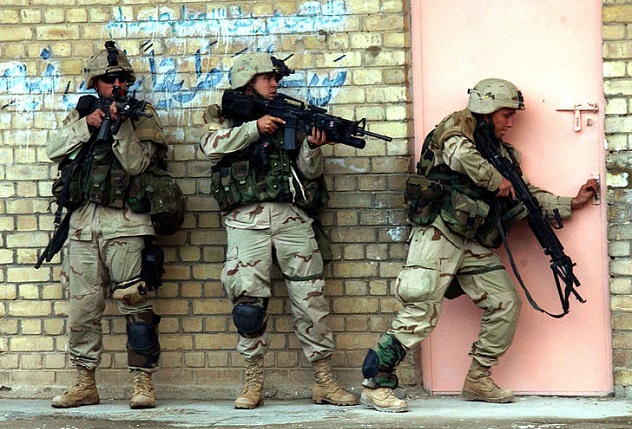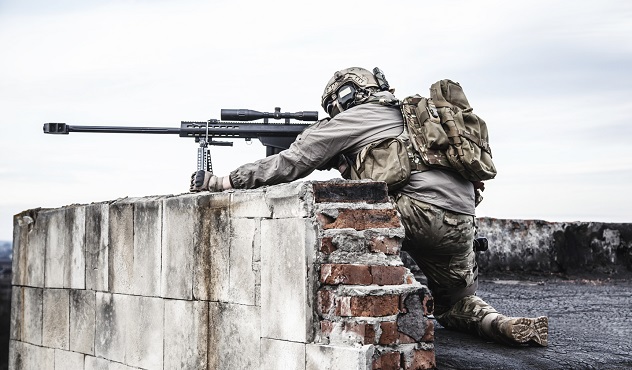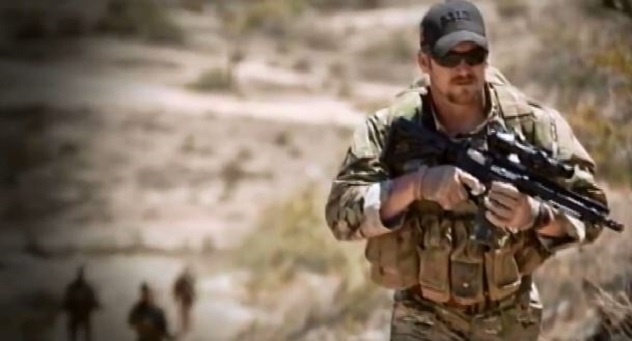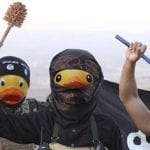 Mysteries
Mysteries  Mysteries
Mysteries  Creepy
Creepy 10 Scary Tales from the Middle Ages That’ll Keep You up at Night
 Humans
Humans 10 One-of-a-kind People the World Said Goodbye to in July 2024
 Movies and TV
Movies and TV 10 Holiday Movies Released at Odd Times of the Year
 Politics
Politics 10 Countries Where Religion and Politics Are Inseparable
 Weird Stuff
Weird Stuff 10 Freaky Times When Famous Body Parts Were Stolen
 Miscellaneous
Miscellaneous 10 Interesting Things Manufacturers Stopped Making and Why
 Gaming
Gaming 10 Funny Tutorials in Games
 History
History 10 Fascinating Little-Known Events in Mexican History
 Facts
Facts 10 Things You May Not Know about the Statue of Liberty
 Mysteries
Mysteries 10 Devastating Missing Child Cases That Remain Unsolved
 Creepy
Creepy 10 Scary Tales from the Middle Ages That’ll Keep You up at Night
 Humans
Humans 10 One-of-a-kind People the World Said Goodbye to in July 2024
Who's Behind Listverse?

Jamie Frater
Head Editor
Jamie founded Listverse due to an insatiable desire to share fascinating, obscure, and bizarre facts. He has been a guest speaker on numerous national radio and television stations and is a five time published author.
More About Us Movies and TV
Movies and TV 10 Holiday Movies Released at Odd Times of the Year
 Politics
Politics 10 Countries Where Religion and Politics Are Inseparable
 Weird Stuff
Weird Stuff 10 Freaky Times When Famous Body Parts Were Stolen
 Miscellaneous
Miscellaneous 10 Interesting Things Manufacturers Stopped Making and Why
 Gaming
Gaming 10 Funny Tutorials in Games
 History
History 10 Fascinating Little-Known Events in Mexican History
 Facts
Facts 10 Things You May Not Know about the Statue of Liberty
10 Remarkable Stories About ‘American Sniper’ Chris Kyle
Navy SEAL Chris Kyle was the most successful sniper in American history. However, Chris thought his success shouldn’t be based on the 160 confirmed kills he’s credited with. Instead, Kyle wanted people to remember the many soldiers and civilians he saved. “That’s the number I’d care about,” Kyle said. “I’d put that [number] everywhere.”
Kyle went on four tours of Iraq, and most of what happened during his time overseas is still classified. However, here are 10 stories about Kyle’s remarkable life. Admittedly, while some of this material comes from interviews with the people who knew him, several of these stories are gleaned straight from Kyle’s memoir. As such, it’s hard to confirm all the details, but regardless, the “American Sniper” was truly larger than life.
10 An-Nasiriyah, Iraq
March 2003
In retrospect, it should have been obvious that Chris Kyle would join the military. In his memoir, Kyle said that from an early age, he was instilled with a profound sense of justice. He hated bullies, and while he wasn’t allowed to start fights, he did frequently defend himself and his little brother with his fists. He also grew up in little Texas towns, working ultra-macho jobs like bronco busting and cattle ranching.
It also should’ve been obvious that he would someday be a sniper. He was a youngster when he first started hunting deer, quail, and turkeys with his family. But he never could have foreseen that he’d become a Navy SEAL. He hated water. “If I see a puddle,” he said in an interview, “I will walk around it.”
Indeed, Kyle’s fear of water was a great impetus to persevere while suffering the rigorous qualifications for the SEALs. After all, if he flunked out, he’d find himself on a ship surrounded by H2O. When he finally qualified, he was assigned to “Charlie” Platoon, SEAL Team Three based out of Coronado, California. He chose this particular team because it had a history of combat in the Middle East, and action was what he yearned for.
Kyle got his wish when the US and its allies invaded Iraq in March 2003. One of the cities on the way to Baghdad is An-Nasiriyah, about 365 kilometers (225 mi) southeast of the capital. After troops tried to take the city in late March, the initial firefight eventually gave way to a building-to-building search for Iraqi militiamen. The scattered remnants of the insurgency were now ambushing soldiers with small arms and RPGs.
Kyle’s platoon was assigned to “overwatch” the Marines, protecting them as they made their searches. In order to prevent ambushes, his platoon took over a run-down building overlooking the street. This way, Kyle could keep an eye on the Marines as they started knocking down doors. However, he wasn’t yet qualified as a sniper, and his chief petty officer was watching the street with a .300 Winchester Magnum. But when the officer needed a break, he handed the gun to Kyle.
About 45 meters (150 ft) from Kyle’s perch, a door opened, and out stepped a woman and a child. As the Marines drew closer, the woman reached under her clothes and yanked the pin from a Chinese grenade. The chief told Kyle to shoot, but he initially hesitated. Then he pulled the trigger twice, one shot hitting the woman and the other exploding the grenade. The child was uninjured.
When the incident was recreated in the movie American Sniper, things played out a little bit differently. The child becomes Kyle’s first sniper kill. However, Kyle said he never once shot a child, and he also stated that the woman was the only female Iraqi he ever killed. Nor did he feel any remorse. “It was my duty to shoot, and I don’t regret it. The woman was already dead. I was just making sure she didn’t take any Marines with her.”
9 Fallujah, Iraq
November 2004

Not long after An-Nasiriyah, SEAL Team Three finished its first Iraqi tour and was rotated stateside. During this period, Kyle took the opportunity to go to SEAL sniper school. The school had only just been revamped, borrowing curricula from other academies, including the Marine sniper and Olympics sharpshooter programs.
According to Brandon Webb, a SEAL sniper instructor and teammate of Kyle’s, the school was “producing the deadliest snipers the world has ever seen.” Webb also added, “The amazing thing is that there are SEAL sniper students I trained, serving on active duty, that have more kills than Chris Kyle, [but] they just haven’t told their stories yet.”
In September 2004, Kyle returned to Iraq to put his new sniper skills to use. In the 18 months since he’d left, Baghdad had fallen, Saddam Hussein had been captured, and the US had officially handed over control of Iraq to an interim government. The country was also flooded with terrorists and insurgents, all bent on destroying the Americans and the new Iraqi government.
The city of Fallujah, some 70 kilometers (45 mi) west of Baghdad, became something of a hot spot for the insurgency in 2004. In November, US forces were sent to retake the city, and snipers from SEAL Teams Three, Five, and Eight detached from their platoons and were sent in to help.
Snipers are trained to stay in place, no matter what’s happening in the street. However, Kyle refused to do that, especially when he saw fellow soldiers in trouble. They were kids, and it was Kyle’s job to keep them alive, even if that meant leaving his perch. As his wife, Taya, explained, “His whole job was protecting, and he took it so seriously that it really did hurt him if anybody was lost. Whether or not he could have saved them was irrelevant—the fact was that if he was anywhere in the vicinity, he felt he could have and should have been able to.”
One November day, Kyle stood overwatch from a roof while Marines cleared buildings below. Suddenly, insurgents attacked, and the Marines fell back, leaving two wounded men in the street. Kyle and another SEAL sniper ran down into the road and picked up the Marines, all while under fire.
“During the heat of it,” Kyle said, “you’re not thinking about it. You know you could get hit at any moment, and they’ll put another belly button in [your] forehead . . . but you just put your head down and go do it.” Kyle put his words into action that day, dragging one of the Marines to safety. Tragically, the wounded man died in excruciating pain. His death would haunt Kyle for years afterward.
8 Fallujah, Iraq
Days Later
A few days after the previous incident, Kyle was on yet another roof when he heard a cacophony of gunfire a few streets over. However, he could not see what was happening and descended to the street to investigate.
Suddenly, Kyle spotted two sets of Marines pinned down by insurgents. After covering the retreat of the first group, he headed for the second bunch of trapped Americans. This time, he found two Marines and two reporters huddled behind a wall.
As Kyle laid down covering fire, the four Americans escaped. He was about to follow suit when he spied a Marine lieutenant, shot in both legs. Kyle reloaded and grabbed the man by his body armor, firing his weapon as he dragged the lieutenant to safety.
That’s when an insurgent threw a fragmentary grenade, and it exploded against a wall. “Pieces of wall peppered my side,” Kyle later said, “from my butt cheek down to my knee. By some lucky chance, my pistol took the biggest fragment. It was pure luck—it might have put a big hole in my leg.”
By then, the enemy was in pursuit, and Kyle was out of ammo. The only thing he could do was to sling his rifle, grab the lieutenant with both hands, and run even faster. Kyle later described how his legs were burning, how he felt he was going to vomit. The sniper was on the verge of quitting, and he was sure that he was going to die.
However, Kyle just kept his legs churning. Eventually, he caught up with the escaping Marines who then proceeded to give him covering fire. All of the Americans managed to reach safety, and this time, the man he rescued survived the bloody incident. The Marine Corps thanked Kyle by awarding him a Bronze Medal with a “V” for valor. It was the first of several medals. In total, Kyle would win two Silver Stars and five Bronze Medals, all for valor.
Regarding his awards, Kyle would write, “Medals are all right, but they have a lot to do with politics, and I am not a fan of politics.” He added that he’d seen a lot of undeserving soldiers receive medals, while deserving soldiers got nothing. It is one of the reasons he never displayed his medals in his home or office.
7 Baghdad, Iraq
December 2005

In December 2005, Iraq held its first ever free election, and predictably, this made the insurgents unhappy. They began kidnapping and executing election officials, and as voting day loomed near, it was feared the insurgents would attack voters. The US Army came up with a plan that required snipers to overwatch poll booths. Kyle was assigned to the Arkansas National Guard and tasked with protecting the turbulent Haifa Street in Baghdad.
Haifa Street ran 3 kilometers (2 mi) northwest from the protected Green Zone, and it was hotly contested by insurgents. Firefights, IED attacks, assassinations, and kidnappings were all routine on Haifa Street. In fact, the Americans called it “Purple Heart Boulevard.” But despite the danger, Kyle and the Arkansas Guard would take over buildings overlooking the street, and Kyle would set up sniper perches.
The nights were usually quiet because insurgents knew the Americans had the advantage of night vision goggles and infrared detectors. During these lulls in action, Kyle often used a satellite phone to call his wife, Taya. Usually, Kyle told Taya that he was safe at base, but on this particular occasion, he actually told her what he was doing.
However, insurgents must have overheard his conversation, and they attacked his building from the street. Kyle tried to reassure his wife when suddenly a rocket-propelled grenade (RPG) slammed into the wall next to him. Debris stung his face as he dropped the phone and began firing out the new hole in the wall. Taya heard the entire firefight, listening in until the phone’s battery died.
Unaware that he hadn’t disconnected the call, it was a few days before Kyle called his wife again. As you might expect, she was an emotional mess. Taya later said of the incident, “You know, I’d just have faith that he was alive, and he was okay.”
6 Ramadi, Iraq
April 2006
Two days before his third deployment to Iraq, Taya needed an emergency C-section because their daughter, McKenna, had her umbilical cord wrapped around her neck. It was an incredibly difficult time to leave, and it reminded Kyle of how he was similarly forced to deploy just 10 days after his son, Colton, was born.
When Kyle arrived in Ramadi in April 2006, it had become the new center for the insurgency. Attacks against US and Iraqi forces happened daily. Not long after Kyle arrived, he was assigned overwatch of a road leading to an outpost on the north side of Ramadi. Kyle built a nest in a seven-story building a short distance from his base and settled in for the long haul.
That night, after sundown, a mass of insurgents came streaming down the road. Their plan was to attack the outpost, but Kyle dropped a few of them before they discovered his location. A trio of men with RPGs aimed their weapons at Kyle, but the sniper picked off all three before they could fire.
By then, Kyle had drawn the attention of the entire group of terrorists. Fortunately, the outpost sent Marines to Kyle’s aid. Kyle would later write that the attack was well-coordinated, complete with enemy snipers to cover the insurgents. Luckily, he shot two of the sharpshooters. His commanding officer would later say that Kyle “single-handedly thwarted a large-scale attack.”
It wasn’t long before the enemy dubbed Kyle the “Devil of Ramadi.” Hoping to take Kyle and his crew out, the insurgents put a bounty on the head of any SEAL sniper, a tidy sum that fluctuated somewhere between $20,000 and $80,000. But while no terrorists ever collected that bounty, Kyle was given a Silver Star for the four months he served in Ramadi. According to the medal’s citation, Kyle took out 91 confirmed enemy fighters and prevented American and Iraqi casualties on at least 30 different occasions.
5 Ramadi, Iraq
August 2006
While Kyle was an incredibly successful sniper, not everything went his way. One day in August 2006, the American was on a roof, covering a crew of 25 Marines. Alongside Kyle was Ryan “Biggles” Job, SEAL Team Three’s primary automatic weapons specialist. An enemy sniper’s bullet struck Job’s machine gun, shattering the weapon and sending metal debris into his face. Job was then medically evacuated out of the combat area.
The shrapnel took out one eye, and nerve damage would cost Job the other. He also lost several bones in his face and suffered minor brain damage. However, Job managed to survive. (Sadly, he would die of complications from facial reconstruction three years later.) Nevertheless, Kyle was incredibly shaken. That’s when the sniper and the rest of his fellow SEALs piled into Bradley armored vehicles and drove to a suspected insurgent hideout. The SEALs were looking for “payback.”
As they entered the house, the point man was a 28-year-old SEAL named Marc Lee. Lee was climbing the steps to the door when he glimpsed something in a window. As he turned to warn the others, a bullet shattered the glass, entered Lee’s mouth, and exited out the back of his head. He was mortally wounded, thus becoming the first SEAL to die in Iraq.
Kyle was deeply affected by Lee’s death. “I just sat down,” Kyle said in an interview, “put my back up against the wall, curled my knees up to my chest, put my head in my knees, and started bawling. It felt like I lost a family member.” It was the day he most regretted in his entire SEAL career.
4 San Diego, California
September 2006
Shortly after Lee’s death, Kyle received word that his infant daughter had been diagnosed with leukemia. He was already in a bad place, and this latest news was just too much. As he later wrote, “The loss of Marc and Ryan’s extreme injuries had taken a toll. My blood pressure had shot up, and I couldn’t sleep. Hearing the news about my daughter pushed me to my breaking point.”
Kyle flew back to the US, but it was not a happy time in the Kyles’ home. Not only were they worried about their daughter, but things were clearly strained between husband and wife. “When he got home,” Taya said, “it seemed to me Chris was so stressed he was numb to everything. It was hard for him to pinpoint how he felt about anything. He was just wiped out and overwhelmed.”
It’s likely that Kyle was suffering from combat post-traumatic stress disorder (PTSD). According to a 2008 study, 14 percent of US soldiers who served in Afghanistan or Iraq acquired PTSD, and each deployment increased the likelihood of getting it. Elevated blood pressure and insomnia—both of which Kyle suffered from—are classic signs of PTSD. Kyle also got into more than one bar fight, and he would often brood over that tragic day when Lee died. All of these behaviors line up with the standard symptoms of PTSD.
Another sign of PTSD is the persistence of certain habits after a person has returned to civilian life. For example, Taya noticed that her husband would often swerve to avoid debris while driving. Back in Iraq, IEDs were hidden on the streets under trash. And one time, Taya tripped their home alarm and then found Kyle cowering under a desk.
Sadly, the stress was exacerbated by his children. McKenna would cry every time Kyle held her, and Colton had difficulty when his father disciplined him. Clearly, he was a stranger to them, which only fueled Taya’s anger and frustration. She was upset that total strangers in the military could trust Kyle with their lives, but she couldn’t depend on him to be a good dad or husband.
Eventually, the doctors determined that McKenna had an infection, not leukemia. However, that good news was tempered by the fact that another SEAL had recently died. Michael Monsoor was on a rooftop with several other soldiers in Ramadi when an insurgent tossed a grenade onto the roof. Monsoor had time to escape the blast, but he knew the other soldiers around him would not survive. So instead of running, he dove onto the grenade, his abdomen absorbing the explosion. He was later posthumously awarded the Medal of Honor.
3 Sadr City, Iraq
April 2008

While back from his third deployment, Kyle and his wife worked on their marriage. But then the worst possible news arrived. Kyle and his newly formed Delta platoon were going to deploy again. They were supposed to remain stateside, but the military decided it needed them in Iraq once more. As compensation, they were tasked to a quieter province in western Iraq. But before he left, Taya made Kyle promise that he wouldn’t sign up again when his enlistment ended in the fall of 2009.
It took the military less than a month to break their word about Kyle remaining in a quiet zone. Snipers around Iraq were being pulled for a special operation in Sadr City, a town on the outskirts of Baghdad. With the help of Iranian weapons, the insurgency was lobbing mortars from Sadr City into the Green Zone. The US military devised a plan to erect a huge concrete wall in order to create a buffer too wide for mortars to cross. Protected by everything from snipers to M-1 tanks to Apache helicopters, the Army began constructing the wall in April 2009.
Kyle’s stay in Sadr City became his bloodiest deployment. The insurgents were better armed, and nearly every time they attacked, they did so with RPGs. And on the very first night of the operation, Kyle was nearly killed.
Instead of driving to their sniper nest in a Stryker or Bradley vehicle as usual, the SEALs decided to walk to the site in the middle of the night. This was a big mistake. They had just arrived at the target building when they were suddenly discovered. Within minutes, Iraqi militiamen were pouring out of nearby buildings. “By this time,” Kyle wrote, “the blocks around us looked like the worst scenes in Black Hawk Down. It seemed like every insurgent, maybe every occupant, wanted a piece of the idiot Americans who foolishly blundered into Sadr City.”
During the battle, a bullet hit Kyle’s helmet and ricocheted off his night vision goggles. As a result, he suffered a minor head wound. Kyle was still checking his scalp when another bullet hit him on the back plate of his bulletproof vest. Again, he had lucked out with only a minor injury.
The team called for a quick reaction force, and soon Stryker vehicles arrived to cover them as they climbed aboard. They were safely extracted, but Kyle’s brush with death frightened him. “That’s when I came to the realization that I’m not a superhuman,” he wrote. “I can die.”
2 Sadr City, Iraq
Two Days Later
Two days after their blunder, the SEALs were back. This time, they were riding a Stryker to a warehouse, their new target building. Not long afterward, Kyle was protecting a group of wall builders when he noticed that civilians had disappeared from the streets below. This was a classic sign that the insurgents were about to do something.
A few moments later, a man with an RPG appeared in the street. Kyle shot him before he could fire. Then he waited. RPGs were valuable to the insurgents, and Kyle knew that someone would be sent to retrieve it. Later, a figure appeared to grab the weapon, and to Kyle’s surprise, it was a child. Kyle refused to fire, letting the boy take the RPG. “I wasn’t going to kill a kid, innocent or not,” he’d later write. “I’d have to wait until the savage who put him up to it showed himself on the street.”
Later on, Kyle’s memoir came under fire for his characterization of the enemy as “savages.” Indeed, a number of critics pounded the term as proof that Kyle was “a racist who took pleasure in dehumanizing and killing brown people.” Never mind that the term “savage” is rather tame compared to the words thrown around by other soldiers describing the people trying to kill them.
But Kyle drew a clear distinction between these “savages” and peace-loving Muslims. “Everyone I shot in Iraq,” he said, “was trying to harm Americans or Iraqis loyal to the new government.” Elsewhere, he was more explicit. “The people we were fighting in Iraq, after Saddam’s army fled or was defeated, were fanatics. They hated us because we weren’t Muslim.”
A careful analysis of his book and interviews shows that Kyle never characterized Muslims in general as savages. However, the argument that he dehumanized the enemy has some merit. Kyle freely admits that he couldn’t do his job if he dwelt upon the humanity of those he killed. There are several examples where Kyle joked about the death he dealt out. He addressed this in his memoir, writing, “Part of it was letting off pressure or steam, I’m sure. A way to cope. If you can’t make sense of things, you start to look for some other way to deal with them. You laugh because you have to have some emotion, you have to express yourself somehow.”
1 Glen Rose, Texas
February 2013
When Kyle returned from his fourth deployment, Taya would later say that he was a wreck, emotionally and mentally. So was she. In the previous three years, Kyle had been home a total of six months. Taya sat him down at the kitchen table and told him to get out of the military. “I took it as an ultimatum,” he recalled. “Either you get out or she and my kids were going to be gone.” He chose his family and was honorably discharged in November 2009.
Kyle said it was the hardest decision he ever made. He felt like he was letting his brothers-in-arms down, and he would have trouble adjusting to civilian life. After all, he missed the camaraderie of the military, and he had trouble transitioning. He drank heavily and suffered from depression.
Then he discovered the benefits of helping other vets work through their physical and psychological scars. In 2011, he founded the FITCO Cares Foundation, which provided exercise and counseling to vets. And in 2012, he published his autobiography, American Sniper, and donated a portion of his profits to the families of his colleagues who died in battle.
In late January 2013, a woman named Jodi Routh approached Kyle to ask if he’d help her son, Eddie Ray Routh. Eddie was a 25-year-old ex-Marine who’d seen action in Iraq. He’d also served in the relief effort after the horrifying earthquake in Haiti. Afterward, Eddie was diagnosed with PTSD, but thus far, the VA hospital had been frustratingly ineffective in treating him. Jodi had heard of Kyle’s FITCO Cares Foundation and turned to Chris as a last resort.
Kyle promised to help, hoping to connect with this vet by taking him to a shooting range. On February 2, 2013, Kyle took Eddie Ray and a friend, Chad Littlefield, to a range in Glen Rose, Texas. The nearly two-hour drive did not go well. Eddie would later complain that neither Kyle nor Littlefield talked to him. By the time he reached Glen Rose, Eddie was convinced the two men were planning to kill him.
As for Kyle, he suspected something was wrong with this ex-Marine. During the drive, he texted Littlefield—who was sitting right beside him—a message reading, “This dude is straight-up nuts.” Nevertheless, all three men took turns at the gun range. Tragically, Eddie decided the men were threats, so he shot Kyle six times and Littlefield seven times. Neither Littlefield nor Kyle had time to unholster their pistols. Almost exactly two years later, Eddie was convicted and sentenced to life without parole.
Steve is the author of 366 Days in Abraham Lincoln’s Presidency: The Private, Political, and Military Decisions of America’s Greatest President, and his work has appeared on KnowledgeNuts.








